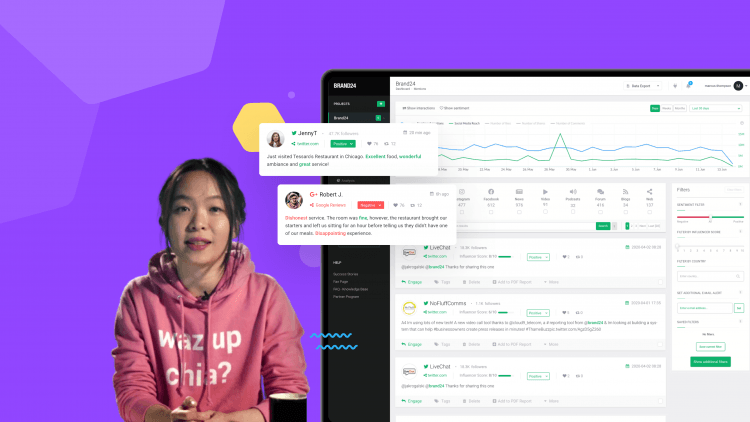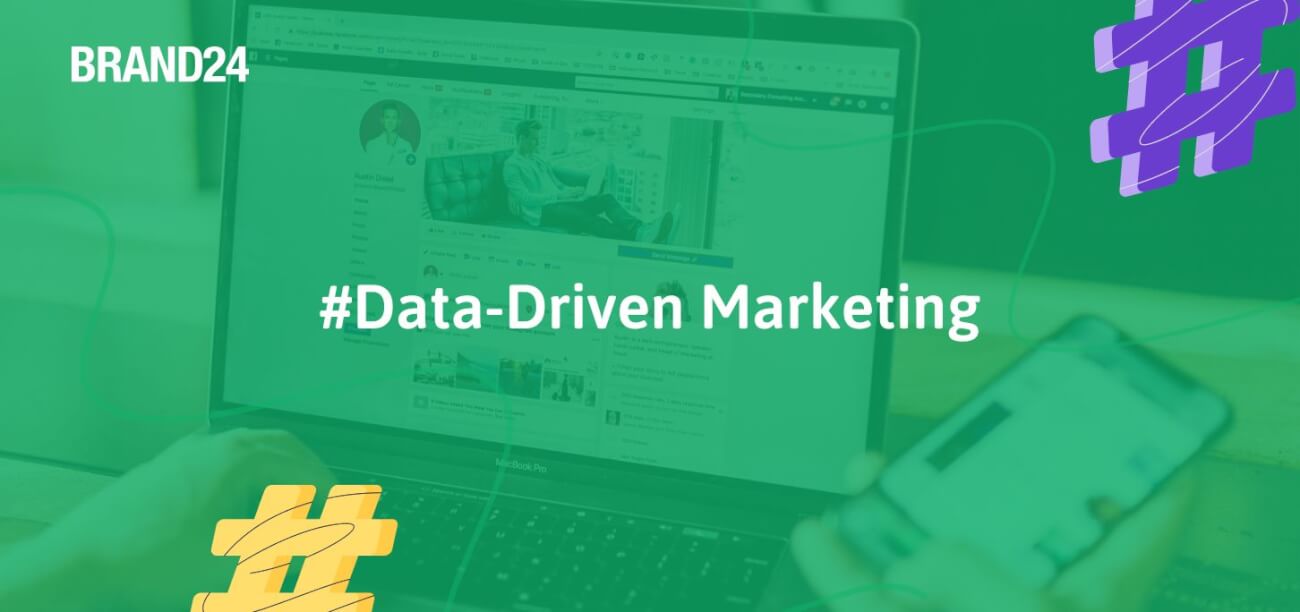10 Marketing Assets Every Company Should Invest In
Table of contents
Back in the day, marketing assets consisted of tangible products, for example, leaflets, books, printed catalogues, and so on. The rise of the Internet changed what we consider marketing assets. Marketing assets are all the metrics, strategies, and documents that help your company grow.
The new definition of marketing assets does not make things easier. On the contrary, you could easily track the number of printed leaflets. But how do you measure all the new metrics? How do you protect your brand from a crisis, and how do you measure the effects of your PR campaign?
What are your marketing assets then? How do you track and calculate them? How do you protect them? In this article, we’ll list the top 10 marketing assets of the digital age!
Marketing asset nr 1: brand reputation
An absolute must-have, an asset that you should protect at all cost — brand reputation. Maintaining a positive brand reputation will have a positive impact on the bottom line of your business.
This marketing asset will:
- help you maintain positive relations with your clients
- improve the trust your customers have in your brand
- have a positive effect on customer retention and customer service
- discover new marketing channels where you can find your audience
- prevent reputation crisis
How do you protect your brand reputation?
You can start by monitoring what is said about your brand online.
To do that, take a look at some of the brand monitoring tools.
Brand monitoring tools will collect all publicly available online pieces of content that contain your chosen keyword. You will be able to spot any reviews, remarks about your brand, and react accordingly.
To see how brand monitoring works look no further! Brand24 is one of the top media monitoring tools (at least, according to Buffer).
Start brand monitoring! Start your free trial here (no credit card required).
If you want to know more about online reputation management, we prepared a special piece of content for you. A free Udemy course: Guide to online reputation management.

In just 40 minutes, you will get to know the most important aspects of managing your brand reputation. And the best part is that the course is free!
If you want to know more about brand reputation management, take a look at these articles:
How to monitor brand reputation in three steps?
Benefits of brand reputation monitoring
Top 10 brand reputation monitoring tools
Marketing asset nr 2: crisis management
Once you monitor mentions around your brand, you might catch a crisis in the making.
One of the digital marketing assets of your brand would be to have a crisis management plan in place.
Preparing a crisis management plan might seem like a waste of time, but trust me, a crisis will hit your organisation in the most unexpected times. Your only weapon is to be prepared.
How do you do that?
- Start with social listening. If you want to avert a crisis, you need to know what people are saying about your brand. That way, you can spot all negative comments right away and react before it all hits the fan.
- Have a crisis response team in place. Engage your employees from different departments, so you have a holistic view of the situation.
- Update your crisis management plan at least once a year. People might forget what their role is in the process.
- Prepare draft statements. The statements will save you a lot of time in the most hectic first stage of the crisis.
Do you want to know more? We got you covered! Take a look at our additional resources:
How to manage a social media crisis?
A short guide to crisis communication
The golden rules of PR crisis management
Marketing asset nr 3: measure PR campaign
Do you know the old golden rule of marketing – if you can’t measure it, you can’t improve it.
That’s why one of the most important marketing assets within your company should be the ability to measure the results of a PR campaign!
Why measuring a PR campaign is important? There are a couple of reasons:
- you will be able to present the results of your work to your supervisors.
- you will know in what shape your business is now and how it compares to the competition
- you will improve your PR campaigns and produce the best content possible
Measuring the results of your online activities is a vital step for success. All social media metrics you track are one of your most important marketing assets.
Besides measuring your PR campaign, there are other assets related to PR you should monitor. If you want to know more, take a look at this blog post:
18+ PR tools every PR manager should consider
How to measure your social media campaign?
Marketing asset nr 4: competitor analysis
You know you have to track the results of your online activities. But the more you know, the better! That’s why you should track the online activities of your competitors as well!
Monitoring your competitors will yield many benefits to your business, for example:
- set industry benchmarks. You will get context to your numbers which will make it easier to assess your performance
- spot any third-party crises that might affect your business. Some crises tend to affect not only the company in question but also brands from the same business niche.
- identify market opportunities that will help you increase market share
- make well-informed decisions based on all the data you’ve gathered
How do you perform competitor analysis? The whole process is about gathering and analysing data. Thankfully, there are special tools dedicated to competitors’ research.
Here’s everything you need to know about competitors research:
How to perform competitor analysis?
Marketing asset nr 5: organic, paid, and earned media
Some of your marketing activities are all about raising brand awareness.
The more people know about your brand, the better. Increasing brand awareness will help you establish your brand as an industry leader and reach brand new audiences.
How do you raise brand awareness?
You can take a look at three marketing assets:
- organic media
- paid media
- earned media
Organic content is all the content you produce that should organically rank in Google or YouTube.
Paid media is the content promoted via any type of ads service, for example, Google or Facebook.
But you can also measure earned media value.
Earned media are all pieces of content that are shared online on other people’s channels. Earned media is a part of the word of mouth marketing, which is an indicator of good brand reputation.
Measuring what type of media drives the biggest traffic to your website will tell you what type of content works for your business.
This marketing asset will tell what the lower hanging fruit is. Should you invest in organic content or spend more on paid ads? If you want to succeed in marketing, you should reach your target audience in any way possible. That’s one of the most important marketing assets.
To find out more about measuring and creating media, take a look at these articles:
How to measure earned media value?
How to promote your YouTube channel?
How to increase your reach on Instagram?
Marketing asset nr 6: social media engagement
We’ll delve into social media analytics later on, for now, let’s take a closer look at social media engagement.
Many marketers dismiss social media engagement as one of the social vanity metrics. I would argue it’s one of the most important ones.
Social media engagement has a direct impact on social media algorithms. In layman’s term, the higher your social media engagement, the more visible your posts will be.
To reiterate — if you want to improve a marketing metric, you should measure it. Without measuring the results of your social media campaign you’re in the dark.
The same holds for social media engagement.
While measuring social media engagement, you should take into account these social media metrics:
- the volume of mentions
- total number of interactions
- the number of comments
- sentiment analysis
If you want to know more, give these articles a look:
Guide to social media engagement
5 steps to create your social media engagement strategy
Marketing asset nr 7: the share of voice
The share of voice is a useful marketing asset you should track regularly.
The share of voice determines what percentage of the whole discussion on the Internet was generated by a given social media account.
The voice share is a helpful auxiliary metric. It will show your place in your business landscape, compared to your rivals.
While examining the share of voice, take a closer look at the top public profiles talking about your brand. This will pinpoint influencers already talking about your solution; people who will be great brand ambassadors.
To read more about the share of voice, take a look here:
How to measure the share of voice?
Marketing asset nr 8: hashtag reach
Can you imagine social media without hashtags? Or social media marketing without the pound sign?
Hashtag’s reach provides you with vital information about your audience.
Once you monitor hashtag performance, you will know:
- which social media platform is the most popular among your audience
- what is the result of your social media campaign
- how your content spreads through social media
If you want to track one social media metric, take a look at the social media reach.
How to measure social media reach?
11 social media KPI that will help you succeed
Marketing asset nr 9: social media reporting
Now that you’ve gathered and analysed all the social media metrics, it’s high time to present the data to the rest of your company.
That’s where social media reporting comes in handy!
Presenting your social media marketing campaign results is probably one of the most vital parts of your campaign.
Your social media channels are a goldmine of knowledge. The insights pulled from Facebook, Twitter, or Instagram will be valuable to many different departments, starting with sales, and ending with the product department.
That’s why you should create personalised social media reports. You will be able to deliver actionable insights that will facilitate the development of your product.
Here’s how to create a social media report.
Marketing asset nr 10: social media analytics
Combine all the previous marketing assets together, and you get social media analytics.
Data-driven decision making should be an integral part of your social media strategy.
Calculating social media ROI, tracking social media sentiment, measuring hashtag’s reach — all of these metrics are a part of the social media analysis process.
Do you want to know how to track each of them?
Take a look here:
A comprehensive guide to social media analysis
How to see how many times a hashtag was used on Twitter?
What is social media sentiment analysis?
Top marketing assets for your business
That’s our selection of marketing assets. We tried to cover all the basics you might need to develop your business.
The amount of information presented in the article can be overwhelming, but feel free to pick and choose the marketing assets that will fulfill the needs of your business.
FAQ
Q: Why are marketing assets important for marketing efforts?
A: Marketing assets play a crucial role in effectively conveying a brand’s message, promoting products or services, and engaging with the target audience. These assets, such as images, videos, blog posts, and social media content, help establish brand identity, generate leads, and drive conversions, ultimately contributing to the success of a marketing strategy.
Q: What is a marketing asset management system?
A marketing asset management tool is a software or platform that allows businesses to store, organize, and manage their marketing materials efficiently. It streamlines the process of creating, updating, and distributing assets, ensuring that sales teams have access to up-to-date and relevant content for their marketing campaigns. This system reduces inconsistencies and errors in marketing materials, saves time, and improves the overall effectiveness of marketing campaigns.
Q: Internal marketing assets vs external marketing assets
A: Internal marketing assets are resources used within a company to support marketing efforts and guide the sales team. Examples include sales scripts, training materials, and brand guidelines. External marketing assets, on the other hand, are materials designed for public consumption, such as brochures, social media content, blog posts, and promotional videos.
To manage marketing assets effectively, sales teams should have access to a centralized marketing asset management system. This allows them to easily find, update, and utilize the appropriate assets for their marketing initiatives, ensuring consistency in messaging and enhancing overall marketing performance.
Q: What is marketing assets definition?
A: Marketing assets are the various resources and materials used by a business to promote its brand, products, or services, and engage with its target audience. These assets can include visual, written, or multimedia content, such as images, videos, blog posts, social media posts, brochures, whitepapers, case studies, and promotional graphics. Marketing assets play an essential role in communicating a brand’s message, generating leads, driving conversions, and ultimately contributing to the success of a marketing strategy.
Related articles

![The Best Digital Marketing Tools to Use in 2025 [22 Tools + Reviews]](https://brand24.com/blog/app/uploads/2020/04/4_Top-digital-marketing-trends-of-2021_1400x660x2-1.png)

